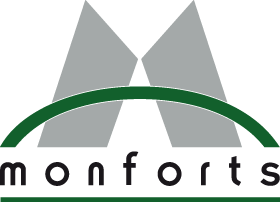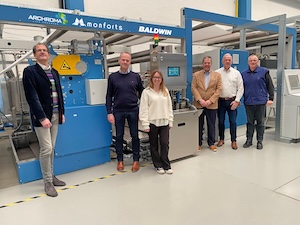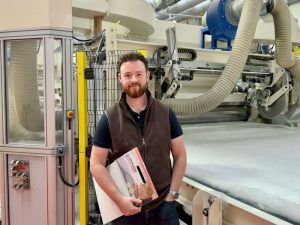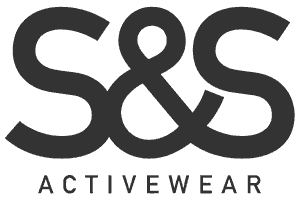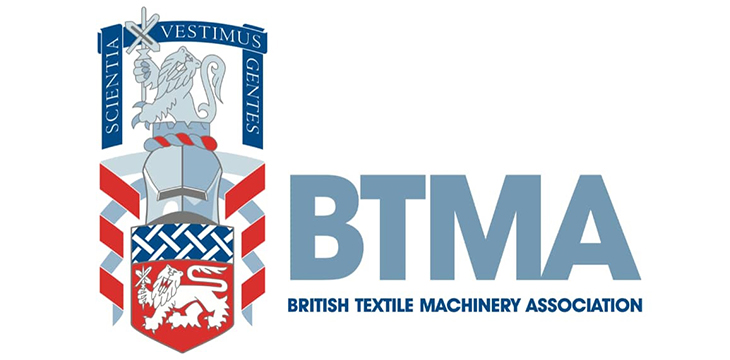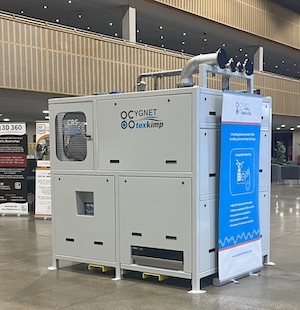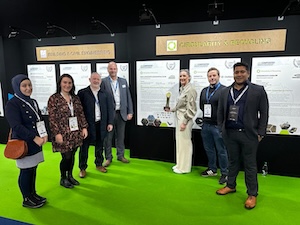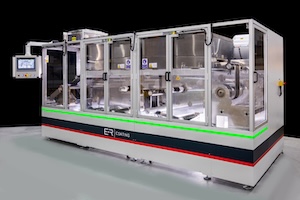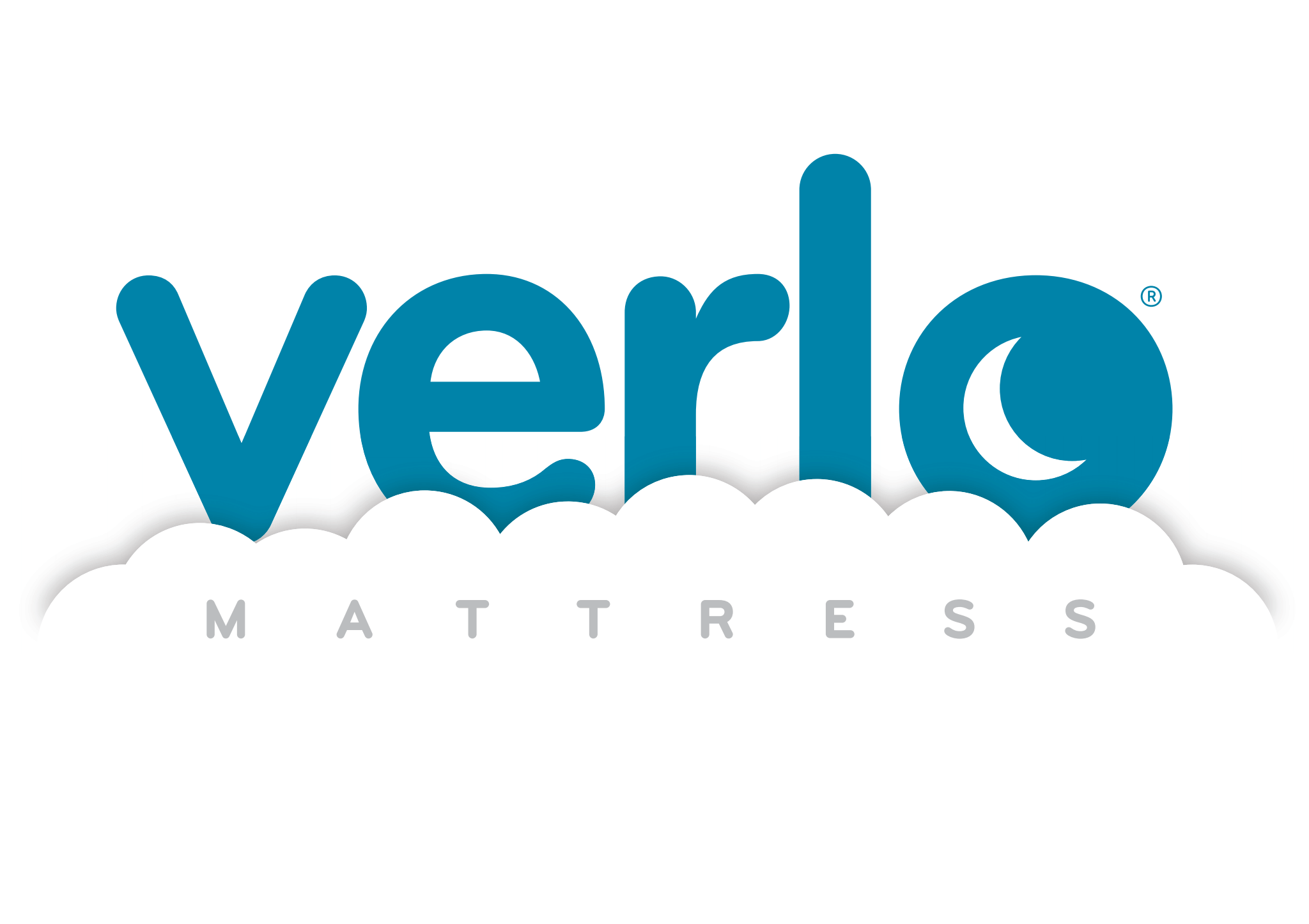 TEMPE, Ariz. — February 3, 2025 — Economic activity in the manufacturing sector expanded in January after 26 consecutive months of contraction, say the nation’s supply executives in the latest Manufacturing ISM® Report On Business®.
TEMPE, Ariz. — February 3, 2025 — Economic activity in the manufacturing sector expanded in January after 26 consecutive months of contraction, say the nation’s supply executives in the latest Manufacturing ISM® Report On Business®.
The report was issued today by Timothy R. Fiore, CPSM, C.P.M., Chair of the Institute for Supply Management® (ISM®) Manufacturing Business Survey Committee:
“The Manufacturing PMI® registered 50.9 percent in January, 1.7 percentage points higher compared to the seasonally adjusted 49.2 percent recorded in December. The overall economy continued in expansion for the 57th month after one month of contraction in April 2020. (A Manufacturing PMI® above 42.3 percent, over a period of time, generally indicates an expansion of the overall economy.) The New Orders Index was in expansion territory for the third month after seven months of contraction, strengthening again to a reading of 55.1 percent, 3 percentage points higher than the seasonally adjusted 52.1 percent recorded in December. The January reading of the Production Index (52.5 percent) is 2.6 percentage points higher than December’s seasonally adjusted figure of 49.9 percent. The index returned to expansion after eight months in contraction. The Prices Index continued in expansion (or ‘increasing’) territory, registering 54.9 percent, up 2.4 percentage points compared to the reading of 52.5 percent in December. The Backlog of Orders Index registered 44.9 percent, down 1 percentage point compared to the 45.9 percent recorded in December. The Employment Index registered 50.3 percent, up 4.9 percentage points from December’s seasonally adjusted figure of 45.4 percent.
“The Supplier Deliveries Index indicated marginally slower deliveries, registering 50.9 percent, 0.8 percentage point higher than the 50.1 percent recorded in December. (Supplier Deliveries is the only ISM® Report On Business® index that is inversed; a reading of above 50 percent indicates slower deliveries, which is typical as the economy improves and customer demand increases.) The Inventories Index registered 45.9 percent, down 2.5 percentage points compared to December’s seasonally adjusted reading of 48.4 percent.
“The New Export Orders Index reading of 52.4 percent is 2.4 percentage points higher than the ‘unchanged’ reading of 50 percent registered in December. The Imports Index returned to expansion in January, registering 51.1 percent, 1.4 percentage points higher than December’s reading of 49.7 percent.”
Fiore continues, “U.S. manufacturing activity expanded in January after 26 consecutive months of contraction. Demand clearly improved, while output expanded and inputs remained accommodative. Demand improvement includes: the (1) New Orders Index moving further into expansion territory, (2) New Export Orders Index moving back into expansion, (3) Backlog of Orders Index dropping slightly and continuing in contraction, and (4) Customers’ Inventories Index remaining in ‘too low’ territory. Output (measured by the Production and Employment indexes) was positive, as factory output improved compared to December, indicating that panelists’ companies are proceeding with growth plans. Employment was stable as final head-count adjustments were made, in many cases among the white-collar workforces. Inputs — defined as supplier deliveries, inventories, prices and imports — generally continued to accommodate future demand growth, with inventories declining, but imports returning to expansion, prices increasing and supplier deliveries marginally slowing.
“Demand and production improved; and employment expanded. However, staff reductions continued with many companies, but at weaker rates. Prices growth was moderate, indicating that further growth will put additional pressure on prices. As predicted, maintaining a slower rate of price increases as demand returns will be a major challenge for 2025. Forty-three percent of manufacturing gross domestic product (GDP) contracted in January, down from 52 percent in December. The share of manufacturing sector GDP registering a composite PMI® calculation at or below 45 percent (a good barometer of overall manufacturing weakness) was 8 percent in January, a dramatic 41-percentage point improvement compared to the 49 percent reported in December. Four of the six largest manufacturing industries (Petroleum & Coal Products; Chemical Products; Machinery; and Transportation Equipment) expanded in January, up from none in December,” says Fiore.
The eight manufacturing industries reporting growth in January — listed in order — are: Textile Mills; Primary Metals; Petroleum & Coal Products; Chemical Products; Machinery; Transportation Equipment; Plastics & Rubber Products; and Electrical Equipment, Appliances & Components. The eight industries reporting contraction in January — in the following order — are: Nonmetallic Mineral Products; Miscellaneous Manufacturing; Wood Products; Fabricated Metal Products; Furniture & Related Products; Computer & Electronic Products; Paper Products; and Food, Beverage & Tobacco Products.
WHAT RESPONDENTS ARE SAYING
“Customer orders slightly stronger than expected. Seeing more general price increases for chemicals/raw materials. No International Longshoremen’s Association strike is a tremendous help.” [Chemical Products]
“Alleviating supply chain conditions are noticeably pivoting back into acute shortage situations, with headwinds following. For aerospace and defense companies, critical minerals supply chains are tightening dramatically due to Chinese restrictions. Concerns are growing of an environment of more supply chain shortages.” [Transportation Equipment]
“As the U.S. administration transfers, we will continue to monitor impact of tariffs on materials used for manufacturing. China stimulus is helping us win orders and increase use of services and consumables. Cost pressures remain for all materials and parts but are starting to stabilize.” [Computer & Electronic Products]
“Volume in 2025 is targeting 2-percent growth. The organization is mindful of potential tariffs and what to do with re-routing or cost increases in supply chains that are impacted.” [Food, Beverage & Tobacco Products]
“Although we are in our busy season, our demand for the first two weeks of 2025 has outpaced normal levels for this period of time.” [Machinery]
“Business is slowly improving.” [Electrical Equipment, Appliances & Components]
“Capital equipment sales are starting 2025 off strong. Normally, we see a soft start to the year, so this strong start is unusual.” [Fabricated Metal Products]
“New orders are still good but decreasing compared to previous quarters. Working through current backlog.” [Miscellaneous Manufacturing]
“Automotive order demand continues to be consistent and on a steady pace. Beginning to look at hiring additional team members once again. Pricing is holding firm. Having to work overtime to cover plant inefficiency to date.” [Primary Metals]
“Looking forward to a year of strong customer demand and higher sales than 2024.” [Textile Mills]
MANUFACTURING AT A GLANCE
January 2025 |
| Index |
Series
Index
Jan |
Series
Index
Dec |
Percentage
Point
Change |
Direction |
Rate of
Change |
Trend*
(Months) |
| Manufacturing PMI® |
50.9 |
49.2 |
+1.7 |
Growing |
From
Contracting |
1 |
| New Orders |
55.1 |
52.1 |
+3.0 |
Growing |
Faster |
3 |
| Production |
52.5 |
49.9 |
+2.6 |
Growing |
From
Contracting |
1 |
| Employment |
50.3 |
45.4 |
+4.9 |
Growing |
From
Contracting |
1 |
| Supplier Deliveries |
50.9 |
50.1 |
+0.8 |
Slowing |
Faster |
2 |
| Inventories |
45.9 |
48.4 |
-2.5 |
Contracting |
Faster |
5 |
| Customers’ Inventories |
46.7 |
46.7 |
0.0 |
Too Low |
Same |
4 |
| Prices |
54.9 |
52.5 |
+2.4 |
Increasing |
Faster |
4 |
| Backlog of Orders |
44.9 |
45.9 |
-1.0 |
Contracting |
Faster |
28 |
| New Export Orders |
52.4 |
50.0 |
+2.4 |
Growing |
From
Unchanged |
1 |
| Imports |
51.1 |
49.7 |
+1.4 |
Growing |
From
Contracting |
1 |
| OVERALL ECONOMY |
Growing |
Faster |
57 |
| Manufacturing Sector |
Growing |
From
Contracting |
1 |
Manufacturing ISM® Report On Business® data is seasonally adjusted for the New Orders, Production, Employment and Inventories indexes.
*Number of months moving in current direction.
Indexes reflect newly released seasonal adjustment factors.
COMMODITIES REPORTED UP/DOWN IN PRICE AND IN SHORT SUPPLY
Commodities Up in Price
Aluminum* (14); Aluminum Coil; Freight Rates; Industrial Gases; Natural Gas (4); Packaging Materials (2); Steel — Scrap; and Sulfur.
Commodities Down in Price
Aluminum*; Plastic Resins (3); Polypropylene Resin (2); Solvents (3); Steel — General (2); and Steel — Hot Rolled (3).
Commodities in Short Supply
Electrical Components (52); Electronic Components (10); Labor — Construction; Rare Earths; and Semiconductors.
Note: The number of consecutive months the commodity is listed is indicated after each item.
*Indicates both up and down in price.
JANUARY 2025 MANUFACTURING INDEX SUMMARIES
Manufacturing PMI®
The U.S. manufacturing sector expanded for first time in January after 26 months of contraction, as the Manufacturing PMI® registered 50.9 percent, 1.7 percentage points higher compared to the seasonally adjusted 49.2 percent reported in December. “The PMI® has increased for three consecutive months, with the most recent bump finally returning the manufacturing sector to expansion. Of the five subindexes that directly factor into the Manufacturing PMI®, four (New Orders, Production, Employment and Supplier Deliveries) were in expansion territory, compared to three in December. The Employment Index expanded in January after seven months in contraction, and the New Orders Index moved further into expansion. Of the six biggest manufacturing industries, four (Petroleum & Coal Products; Chemical Products; Machinery; and Transportation Equipment) registered growth,” says Fiore. A reading above 50 percent indicates that the manufacturing sector is generally expanding; below 50 percent indicates that it is generally contracting.
A Manufacturing PMI® above 42.3 percent, over a period of time, generally indicates an expansion of the overall economy. Therefore, the January Manufacturing PMI® indicates the overall economy grew for the 57th straight month after last contracting in April 2020. “The past relationship between the Manufacturing PMI® and the overall economy indicates that the January reading (50.9 percent) corresponds to a change of plus-2.4 percent in real gross domestic product (GDP) on an annualized basis,” says Fiore.
THE LAST 12 MONTHS
| Month |
Manufacturing
PMI® |
Month |
Manufacturing
PMI® |
| Jan 2025 |
50.9 |
Jul 2024 |
47.0 |
| Dec 2024 |
49.2 |
Jun 2024 |
48.3 |
| Nov 2024 |
48.4 |
May 2024 |
48.5 |
| Oct 2024 |
46.9 |
Apr 2024 |
48.8 |
| Sep 2024 |
47.5 |
Mar 2024 |
49.8 |
| Aug 2024 |
47.5 |
Feb 2024 |
47.6 |
| Average for 12 months – 48.4
High – 50.9
Low – 46.9 |
New Orders
ISM®’s New Orders Index expanded in January for the third consecutive month after seven months in contraction, registering 55.1 percent, an increase of 3 percentage points compared to December’s seasonally adjusted figure of 52.1 percent. The New Orders Index hasn’t indicated consistent growth since a 24-month streak of expansion ended in May 2022. “Of the six largest manufacturing sectors, four (Petroleum & Coal Products; Machinery; Chemical Products; and Transportation Equipment) reported increased new orders. Panelists noted an improved level of demand performance, with a 2-to-1 ratio of positive comments versus those expressing concern about near-term demand, an improvement compared to December. Capital and export orders were significant contributors,” says Fiore. A New Orders Index above 52.1 percent, over time, is generally consistent with an increase in the Census Bureau’s series on manufacturing orders (in constant 2000 dollars).
The nine manufacturing industries that reported growth in new orders in January, in order, are: Textile Mills; Primary Metals; Petroleum & Coal Products; Machinery; Chemical Products; Transportation Equipment; Plastics & Rubber Products; Fabricated Metal Products; and Electrical Equipment, Appliances & Components. The five industries reporting a decline in new orders in January are: Nonmetallic Mineral Products; Miscellaneous Manufacturing; Wood Products; Furniture & Related Products; and Food, Beverage & Tobacco Products.
| New Orders |
%Higher |
%Same |
%Lower |
Net |
Index |
| Jan 2025 |
26.3 |
53.7 |
20.0 |
+6.3 |
55.1 |
| Dec 2024 |
21.0 |
54.9 |
24.1 |
-3.1 |
52.1 |
| Nov 2024 |
21.0 |
54.3 |
24.7 |
-3.7 |
50.3 |
| Oct 2024 |
20.4 |
50.6 |
29.0 |
-8.6 |
47.9 |
Production
The Production Index elevated into expansion territory in January, registering 52.5 percent, 2.6 percentage points higher than the seasonally adjusted December reading of 49.9 percent. Prior to this month’s reading, the index was in contraction territory for eight consecutive months. The last time the index registered above 50 percent was in April 2024 (50.7 percent). Of the six largest manufacturing sectors, three (Machinery; Transportation Equipment; and Chemical Products) reported increased production. “Production levels improved in January, led by the more capital-intensive industry sectors and in spite of weather issues,” says Fiore. An index above 52.1 percent, over time, is generally consistent with an increase in the Federal Reserve Board’s Industrial Production figures.
The six industries reporting growth in production during the month of January, in order, are: Textile Mills; Plastics & Rubber Products; Machinery; Transportation Equipment; Electrical Equipment, Appliances & Components; and Chemical Products. The five industries reporting a decrease in production in January are: Nonmetallic Mineral Products; Wood Products; Furniture & Related Products; Food, Beverage & Tobacco Products; and Miscellaneous Manufacturing. Six industries reported no change in production levels in January as compared to December.
| Production |
%Higher |
%Same |
%Lower |
Net |
Index |
| Jan 2025 |
19.4 |
62.1 |
18.5 |
+0.9 |
52.5 |
| Dec 2024 |
15.3 |
59.3 |
25.4 |
-10.1 |
49.9 |
| Nov 2024 |
15.9 |
63.2 |
20.9 |
-5.0 |
47.5 |
| Oct 2024 |
16.8 |
59.3 |
23.9 |
-7.1 |
47.0 |
Employment
ISM®’s Employment Index registered 50.3 percent in January, 4.9 percentage points higher than December’s seasonally adjusted reading of 45.4 percent. “The index has returned to expansion after contracting in 14 of the last 16 months. Of the six big manufacturing sectors, two (Chemical Products; and Transportation Equipment) expanded employment in January. Respondents’ companies are continuing to reduce head counts through layoffs, attrition and hiring freezes. This action is supported in January by the approximately 1-to-1 ratio of hiring versus staff-reduction comments, compared to a 1-to-2 ratio the previous month, meaning less workforce reduction activity is occurring as we enter 2025,” says Fiore. An Employment Index above 50.3 percent, over time, is generally consistent with an increase in the Bureau of Labor Statistics (BLS) data on manufacturing employment.
Of 18 manufacturing industries, the four industries reporting employment growth in January are: Chemical Products; Transportation Equipment; Miscellaneous Manufacturing; and Electrical Equipment, Appliances & Components. The eight industries reporting a decrease in employment in January, in the following order, are: Textile Mills; Primary Metals; Furniture & Related Products; Fabricated Metal Products; Machinery; Computer & Electronic Products; Plastics & Rubber Products; and Food, Beverage & Tobacco Products.
| Employment |
%Higher |
%Same |
%Lower |
Net |
Index |
| Jan 2025 |
11.7 |
75.1 |
13.2 |
-1.5 |
50.3 |
| Dec 2024 |
7.0 |
75.3 |
17.7 |
-10.7 |
45.4 |
| Nov 2024 |
14.2 |
65.3 |
20.5 |
-6.3 |
48.1 |
| Oct 2024 |
9.0 |
70.6 |
20.4 |
-11.4 |
44.8 |
Supplier Deliveries†
Delivery performance of suppliers to manufacturing organizations was marginally slower in January, with the Supplier Deliveries Index registering 50.9 percent, a 0.8-percentage point increase compared to the reading of 50.1 percent reported in December. This expansion follows a contraction in November preceded by four consecutive months of slower deliveries, with four straight months of faster deliveries before that. After a reading of 52.4 percent in September 2022, the index went into contraction territory the following month and remained there for 20 out of 21 months (with February 2024 the exception). Of the six big industries, four (Food, Beverage & Tobacco Products; Transportation Equipment; Computer & Electronic Products; and Machinery) reported slower supplier deliveries in January. “Supplier deliveries moved marginally deeper into ‘slower’ territory, as respondents indicated that supplier delivery performance continues to meet the expectations of their companies’ customers. Panelists’ comments support the fact that suppliers are having more difficulty in meeting companies’ demands,” says Fiore. A reading below 50 percent indicates faster deliveries, while a reading above 50 percent indicates slower deliveries.
The five manufacturing industries reporting slower supplier deliveries in January are: Textile Mills; Food, Beverage & Tobacco Products; Transportation Equipment; Computer & Electronic Products; and Machinery. The three industries reporting faster supplier deliveries in January are: Electrical Equipment, Appliances & Components; Fabricated Metal Products; and Chemical Products. Nine industries reported no change in supplier deliveries in January as compared to December.
| Supplier Deliveries |
%Slower |
%Same |
%Faster |
Net |
Index |
| Jan 2025 |
7.8 |
86.2 |
6.0 |
+1.8 |
50.9 |
| Dec 2024 |
6.4 |
87.4 |
6.2 |
+0.2 |
50.1 |
| Nov 2024 |
5.7 |
86.0 |
8.3 |
-2.6 |
48.7 |
| Oct 2024 |
11.9 |
80.1 |
8.0 |
+3.9 |
52.0 |
Inventories
The Inventories Index registered 45.9 percent in January, down 2.5 percentage points compared to the seasonally adjusted reading of 48.4 percent reported in December. The last time the Inventories Index registered above 50 percent was in August, when it registered 50.2 percent. “Manufacturing inventories contracted in January, as panelists’ companies produced more goods and likely did not receive as much material as desired. The inventory account will most likely remain dynamic as supply and demand come into better balance,” says Fiore. An Inventories Index greater than 44.5 percent, over time, is generally consistent with expansion in the Bureau of Economic Analysis (BEA) figures on overall manufacturing inventories (in chained 2000 dollars).
Of 18 manufacturing industries, the six industries reporting higher inventories in January — listed in order — are: Textile Mills; Nonmetallic Mineral Products; Furniture & Related Products; Primary Metals; Machinery; and Food, Beverage & Tobacco Products. The seven industries reporting lower inventories in January — in the following order — are: Computer & Electronic Products; Miscellaneous Manufacturing; Fabricated Metal Products; Paper Products; Transportation Equipment; Plastics & Rubber Products; and Chemical Products.
| Inventories |
%Higher |
%Same |
%Lower |
Net |
Index |
| Jan 2025 |
12.2 |
67.4 |
20.4 |
-8.2 |
45.9 |
| Dec 2024 |
14.4 |
64.8 |
20.8 |
-6.4 |
48.4 |
| Nov 2024 |
15.5 |
63.2 |
21.3 |
-5.8 |
47.7 |
| Oct 2024 |
14.2 |
59.1 |
26.7 |
-12.5 |
43.2 |
Customers’ Inventories†
ISM®’s Customers’ Inventories Index registered a reading of 46.7 percent in January, the same reading as reported in December. “Customers’ inventory levels in January continue on the high side of ‘too low.’ Panelists are reporting that the amounts of their companies’ products in their customers’ inventories suggest a demand level that is positive for future production,” says Fiore.
The five industries reporting customers’ inventories as too high in January are: Nonmetallic Mineral Products; Electrical Equipment, Appliances & Components; Computer & Electronic Products; Miscellaneous Manufacturing; and Plastics & Rubber Products. The eight industries reporting customers’ inventories as too low in January, in order, are: Textile Mills; Paper Products; Primary Metals; Machinery; Food, Beverage & Tobacco Products; Transportation Equipment; Chemical Products; and Fabricated Metal Products.
Customers’
Inventories |
%
Reporting |
%Too
High |
%About
Right |
%Too
Low |
Net |
Index |
| Jan 2025 |
77 |
9.0 |
75.4 |
15.6 |
-6.6 |
46.7 |
| Dec 2024 |
78 |
11.5 |
70.3 |
18.2 |
-6.7 |
46.7 |
| Nov 2024 |
77 |
10.6 |
75.5 |
13.9 |
-3.3 |
48.4 |
| Oct 2024 |
80 |
12.2 |
69.1 |
18.7 |
-6.5 |
46.8 |
Prices†
The ISM® Prices Index registered 54.9 percent, 2.4 percentage points higher compared to the December reading of 52.5 percent, indicating raw materials prices increased for the fourth straight month in January after a decrease in September. Of the six largest manufacturing industries, four — Petroleum & Coal Products; Food, Beverage & Tobacco Products; Chemical Products; and Transportation Equipment — reported price increases in January. “The Prices Index indicated increasing prices in January for the fourth consecutive month, likely reflecting the agreement and deployment of prices by buyers for 2025. Mill materials (steel, aluminum and copper), food elements and natural gas registered increases, offset by plastic resins and diesel fuel moving down in price. Twenty-one percent of companies reported higher prices in January, compared to 14 percent in December,” says Fiore. A Prices Index above 52.8 percent, over time, is generally consistent with an increase in the Bureau of Labor Statistics (BLS) Producer Price Index for Intermediate Materials.
In January, the 11 industries that reported paying increased prices for raw materials, in order, are: Paper Products; Petroleum & Coal Products; Primary Metals; Wood Products; Food, Beverage & Tobacco Products; Electrical Equipment, Appliances & Components; Nonmetallic Mineral Products; Fabricated Metal Products; Miscellaneous Manufacturing; Chemical Products; and Transportation Equipment. The four industries report paying decreased prices for raw materials in January are: Textile Mills; Furniture & Related Products; Computer & Electronic Products; and Machinery.
| Prices |
%Higher |
%Same |
%Lower |
Net |
Index |
| Jan 2025 |
20.7 |
68.3 |
11.0 |
+9.7 |
54.9 |
| Dec 2024 |
14.4 |
76.1 |
9.5 |
+4.9 |
52.5 |
| Nov 2024 |
12.2 |
76.1 |
11.7 |
+0.5 |
50.3 |
| Oct 2024 |
19.8 |
69.9 |
10.3 |
+9.5 |
54.8 |
Backlog of Orders†
ISM®’s Backlog of Orders Index registered 44.9 percent, a decrease of 1 percentage point compared to the December reading of 45.9 percent, indicating order backlogs contracted for the 28th consecutive month after a 27-month period of expansion. None of the six largest manufacturing industries reported expanded order backlogs in January. “It appears that the extensive decline in order books has dramatically slowed, indicated by two months at moderate rather than significant contraction. By definition, the Backlog of Orders Index will be the last of the four demand indicators to enter expansion,” says Fiore.
Of the 18 manufacturing industries, five reported growth in order backlogs in January: Textile Mills; Miscellaneous Manufacturing; Primary Metals; Fabricated Metal Products; and Electrical Equipment, Appliances & Components. The eight industries reporting lower backlogs in January — in the following order — are: Petroleum & Coal Products; Nonmetallic Mineral Products; Plastics & Rubber Products; Wood Products; Chemical Products; Transportation Equipment; Machinery; and Computer & Electronic Products.
Backlog of
Orders |
%
Reporting |
%Higher |
%Same |
%Lower |
Net |
Index |
| Jan 2025 |
93 |
12.6 |
64.6 |
22.8 |
-10.2 |
44.9 |
| Dec 2024 |
91 |
14.9 |
62.0 |
23.1 |
-8.2 |
45.9 |
| Nov 2024 |
92 |
14.5 |
54.6 |
30.9 |
-16.4 |
41.8 |
| Oct 2024 |
93 |
14.1 |
56.4 |
29.5 |
-15.4 |
42.3 |
New Export Orders†
ISM®’s New Export Orders Index registered a reading of 52.4 percent in January, up 2.4 percentage points from December’s “unchanged” reading of 50 percent. “The New Export Orders Index reading indicates that export orders grew compared to last month, following six straight months of contraction. New export orders expanded this month, as panelists’ comments support more activity due to Chinese stimulus measures and as Beijing prepares for its own potential counter tariffs,” says Fiore.
The seven industries reporting growth in new export orders in January — in the following order — are: Textile Mills; Primary Metals; Transportation Equipment; Chemical Products; Computer & Electronic Products; Food, Beverage & Tobacco Products; and Machinery. The four industries reporting a decrease in new export orders in January are: Plastics & Rubber Products; Paper Products; Miscellaneous Manufacturing; and Electrical Equipment, Appliances & Components.
New Export
Orders |
%
Reporting |
%Higher |
%Same |
%Lower |
Net |
Index |
| Jan 2025 |
74 |
12.0 |
80.8 |
7.2 |
+4.8 |
52.4 |
| Dec 2024 |
74 |
10.9 |
78.2 |
10.9 |
0.0 |
50.0 |
| Nov 2024 |
75 |
10.6 |
76.1 |
13.3 |
-2.7 |
48.7 |
| Oct 2024 |
74 |
7.7 |
75.6 |
16.7 |
-9.0 |
45.5 |
Imports†
ISM®’s Imports Index turned upward in January and returned to expansion territory; the reading of 51.1 percent is 1.4 percentage points higher compared to the reading of 49.7 percent reported in December. “Imports expanded this month after contracting for seven months in a row, preceded by five consecutive months of expansion and 14 consecutive months of contraction prior to that. Imports re-entered growth as inventory constraints weaken, tariff countermeasures are put in place, a ports strike was avoided and the deliveries from the Lunar New Year season arrive at U.S. ports,” says Fiore.
The eight industries reporting an increase in import volumes in January, in order, are: Textile Mills; Wood Products; Furniture & Related Products; Machinery; Miscellaneous Manufacturing; Food, Beverage & Tobacco Products; Computer & Electronic Products; and Transportation Equipment. The four industries that reported lower volumes of imports in January are: Paper Products; Primary Metals; Electrical Equipment, Appliances & Components; and Chemical Products.
| Imports |
%
Reporting |
%Higher |
%Same |
%Lower |
Net |
Index |
| Jan 2025 |
85 |
11.6 |
78.9 |
9.5 |
+2.1 |
51.1 |
| Dec 2024 |
85 |
12.8 |
73.8 |
13.4 |
-0.6 |
49.7 |
| Nov 2024 |
83 |
10.2 |
74.8 |
15.0 |
-4.8 |
47.6 |
| Oct 2024 |
84 |
11.7 |
73.1 |
15.2 |
-3.5 |
48.3 |
†The Supplier Deliveries, Customers’ Inventories, Prices, Backlog of Orders, New Export Orders, and Imports indexes do not meet the accepted criteria for seasonal adjustments.
Buying Policy
The average commitment lead time for Capital Expenditures in January was 168 days, a decrease of seven days compared to December. Average lead time in January for Production Materials was 83 days, an increase of two days compared to December. Average lead time for Maintenance, Repair and Operating (MRO) Supplies was 47 days, an increase of one day compared to December.
| Percent Reporting |
Capital
Expenditures |
Hand-to-
Mouth |
30 Days |
60 Days |
90 Days |
6 Months |
1 Year+ |
Average
Days |
| Jan 2025 |
17 |
4 |
8 |
15 |
30 |
26 |
168 |
| Dec 2024 |
14 |
5 |
8 |
15 |
30 |
28 |
175 |
| Nov 2024 |
16 |
4 |
9 |
15 |
29 |
27 |
170 |
| Oct 2024 |
16 |
5 |
12 |
12 |
28 |
27 |
168 |
| Percent Reporting |
|
Production
Materials |
Hand-to-
Mouth |
30 Days |
60 Days |
90 Days |
6 Months |
1 Year+ |
Average
Days |
|
| Jan 2025 |
6 |
25 |
29 |
26 |
9 |
5 |
83 |
|
| Dec 2024 |
7 |
25 |
28 |
27 |
8 |
5 |
81 |
|
| Nov 2024 |
8 |
24 |
28 |
27 |
9 |
4 |
79 |
|
| Oct 2024 |
9 |
25 |
26 |
26 |
9 |
5 |
81 |
|
| Percent Reporting |
| MRO Supplies |
Hand-to-
Mouth |
30 Days |
60 Days |
90 Days |
6 Months |
1 Year+ |
Average
Days |
| Jan 2025 |
29 |
34 |
19 |
11 |
6 |
1 |
47 |
| Dec 2024 |
30 |
35 |
16 |
13 |
5 |
1 |
46 |
| Nov 2024 |
30 |
34 |
17 |
13 |
6 |
0 |
44 |
| Oct 2024 |
30 |
34 |
18 |
12 |
5 |
1 |
46 |
Posted: February 7, 2025
Source: Institute for Supply Management
 SHANGHAI — February 7, 2025 — Featuring over 3,000 exhibitors across 190,000 sqm at Shanghai’s National Exhibition and Convention Center, the show will spotlight a diverse range of products and services. As is the case for most other industries, the textile sector is making bigger strides towards sustainable practices. This trend is apparent throughout the value chain, with one promising development being the increasing use of recycled materials and bio-based fibres in functional textiles. Having gained prominence at recent editions of Intertextile Apparel, functional sustainability will be in evidence across the fairground at the upcoming Spring Edition, and in particular at two of the show’s featured zones – Econogy Hub and Functional Lab.
SHANGHAI — February 7, 2025 — Featuring over 3,000 exhibitors across 190,000 sqm at Shanghai’s National Exhibition and Convention Center, the show will spotlight a diverse range of products and services. As is the case for most other industries, the textile sector is making bigger strides towards sustainable practices. This trend is apparent throughout the value chain, with one promising development being the increasing use of recycled materials and bio-based fibres in functional textiles. Having gained prominence at recent editions of Intertextile Apparel, functional sustainability will be in evidence across the fairground at the upcoming Spring Edition, and in particular at two of the show’s featured zones – Econogy Hub and Functional Lab.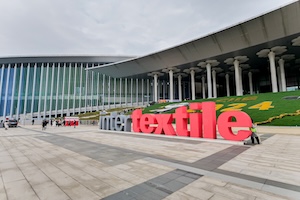 Following its successful debut at last year’s Autumn Edition, the dedicated Econogy Hub will feature at the Spring Edition of Intertextile Shanghai Apparel Fabrics for the first time, alongside Econogy Finder, allowing exhibitors who have passed the independent Econogy Check to communicate green credentials to buyers. Meanwhile, Functional Lab’s dedicated display area The CUBE will make its first appearance at the spring show, home to a range of curated, on-trend functional fabrics.
Following its successful debut at last year’s Autumn Edition, the dedicated Econogy Hub will feature at the Spring Edition of Intertextile Shanghai Apparel Fabrics for the first time, alongside Econogy Finder, allowing exhibitors who have passed the independent Econogy Check to communicate green credentials to buyers. Meanwhile, Functional Lab’s dedicated display area The CUBE will make its first appearance at the spring show, home to a range of curated, on-trend functional fabrics.


